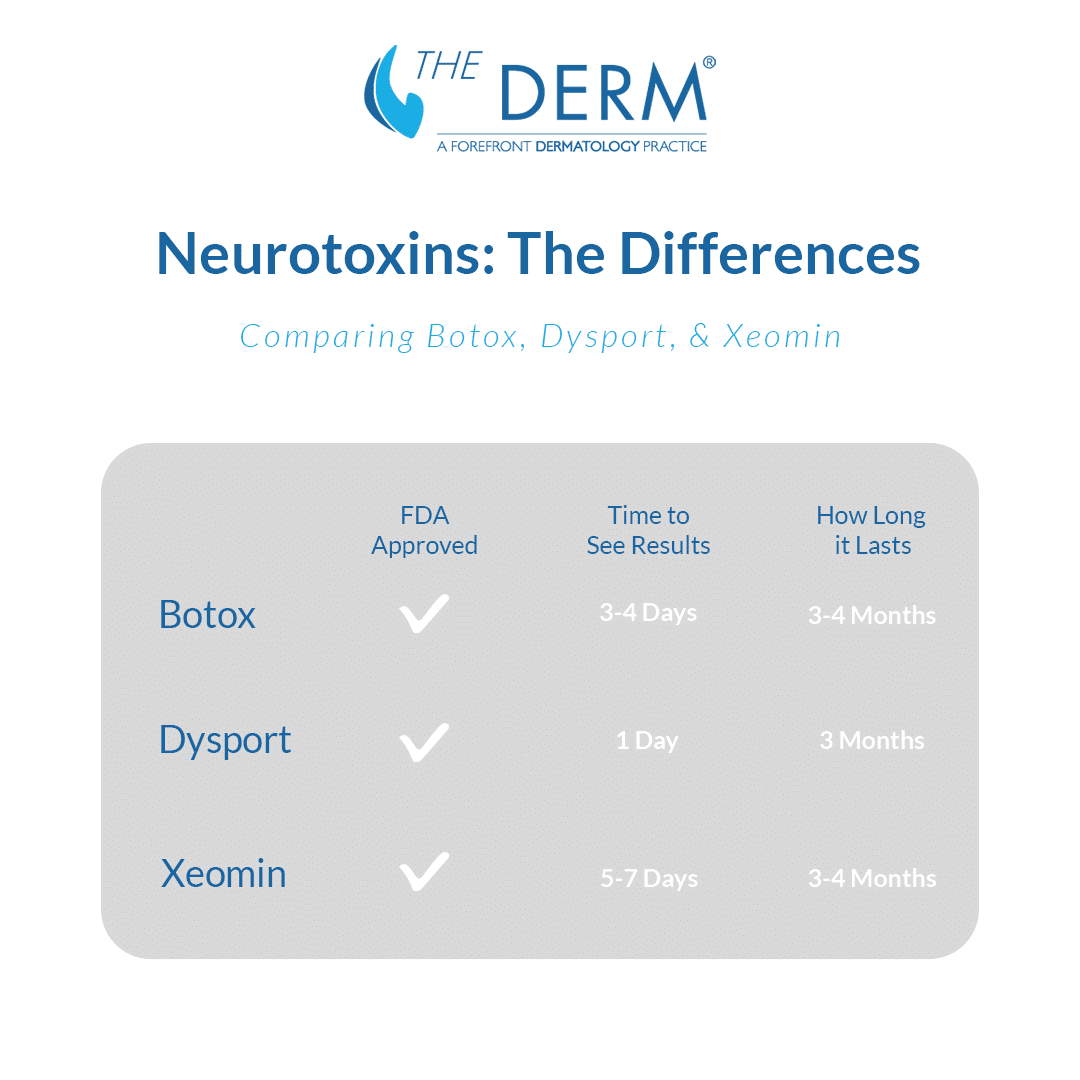There are so many unique and interesting skin care practices brought to light through current technological advances. One of which is using neurotoxins to treat and even prevent certain skin concerns.
While its name may be a little scary, neurotoxins actually boast a big number of skincare benefits we’ll highlight here.
What are neurotoxins for skincare?
A neurotoxin is a substance that impacts the function of the nervous system.
When it comes to neurotoxins in skin care specifically, these substances have the ability to alter the function of certain nerves when injected, to relax muscle movement that causes wrinkles in specific areas such as the forehead, in between the eyebrows, and crows feet by the eyes.
Are neurotoxins for skin safe?
Yes! Our professionals are trained and skilled in using neurotoxins for skincare.
The only ones we use are FDA approved, fully safe, and effective for treating various skin concerns to help you meet your skin goals.
What are the types of neurotoxins you carry?
Here at The Derm, the neurotoxins we carry are:

What are the differences between neurotoxins?
While all neurotoxins work similarly, there are some key differences to understand that can help you determine which will fit your unique needs best.
The similarity between all of these products we carry is that they are FDA-approved and they all contain BoNT-A (botulinum toxin type A) as the active ingredient.
Where these types differ is in the potency, dosage, and overall composition of the material, which can impact which areas of the skin these products are best suited to treat.
Botox
This is typically what is thought of when people think of neurotoxins, having been one of the first approved by the FDA for use in skincare.
Botox has a higher potency than many neurotoxins, and is typically used to treat crow’s feet and frown lines (between the eyebrows).
The effects of Botox can typically be seen within a few days of injection, and last 3-4 months.
Dysport
While this neurotoxin is slightly less potent than Botox, its chemical makeup (the weight of protective proteins) makes it more ideal for treating larger surface areas, like the forehead.
Similarly to Botox, Dypsort is created using cow’s milk protein, which means those with lactose intolerances may need to find an alternate neurotoxin.
For Dysport, you can expect to see results within a single day, though it may not last quite as long as Botox injections.
Xeomin
This neurotoxin is fairly different than the two above in that it doesn’t mix the main active ingredient of BoNT-A with complexing proteins. This just means it is a purified state of BoNT-A, and there isn’t a need to refrigerate it, which can make it a more comfortable option for injecting.
If you’ve experienced discomfort or a lack of results with Botox or Dysport, Xeomin may be a more successful option for you due to its different chemical makeup.
For this one, you may not see results until five to seven days after your injection, though results typically last the same amount of time as Botox and Dysport.
Ultimately, a professional dermatologist will best be able to help find the best neurotoxin to suit your unique needs.
How do neurotoxins work?
There is a complex reaction that takes place when these products come into contact with certain muscles. The main idea to understand is that neurotoxins can impact the muscle function of where it’s injected.
This means that with careful placement, muscles in certain areas become paralyzed, which will reduce excessive wrinkling caused by certain repetitive facial expressions. This is also why neurotoxins make a great preventative wrinkle treatment by reducing the frequency of skin wrinkling in certain areas, which reduces the wear on that skin.
Are you looking to treat certain wrinkles and think a neurotoxin may be the best fit for you? Make sure to book an appointment with us to determine which is best for you!







